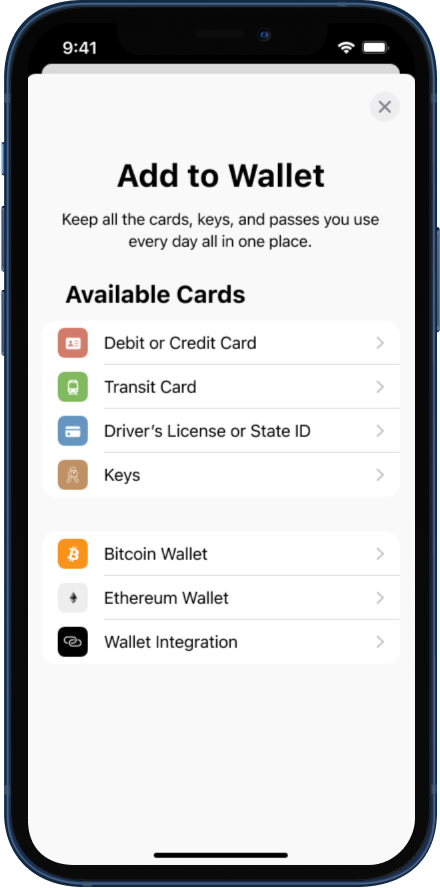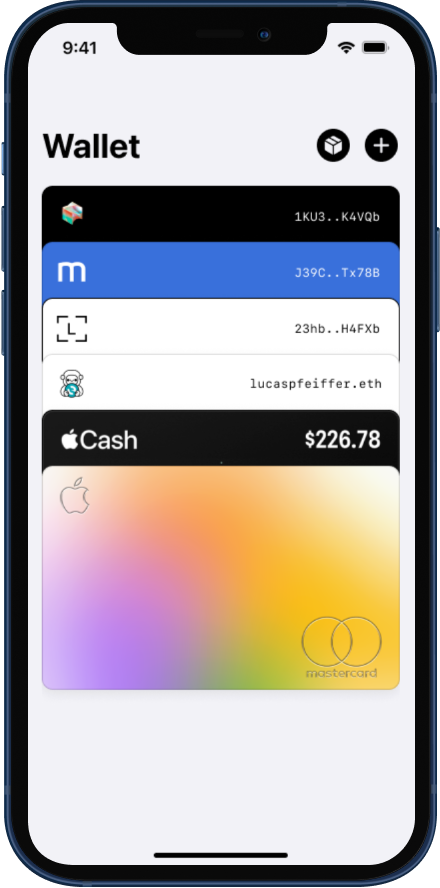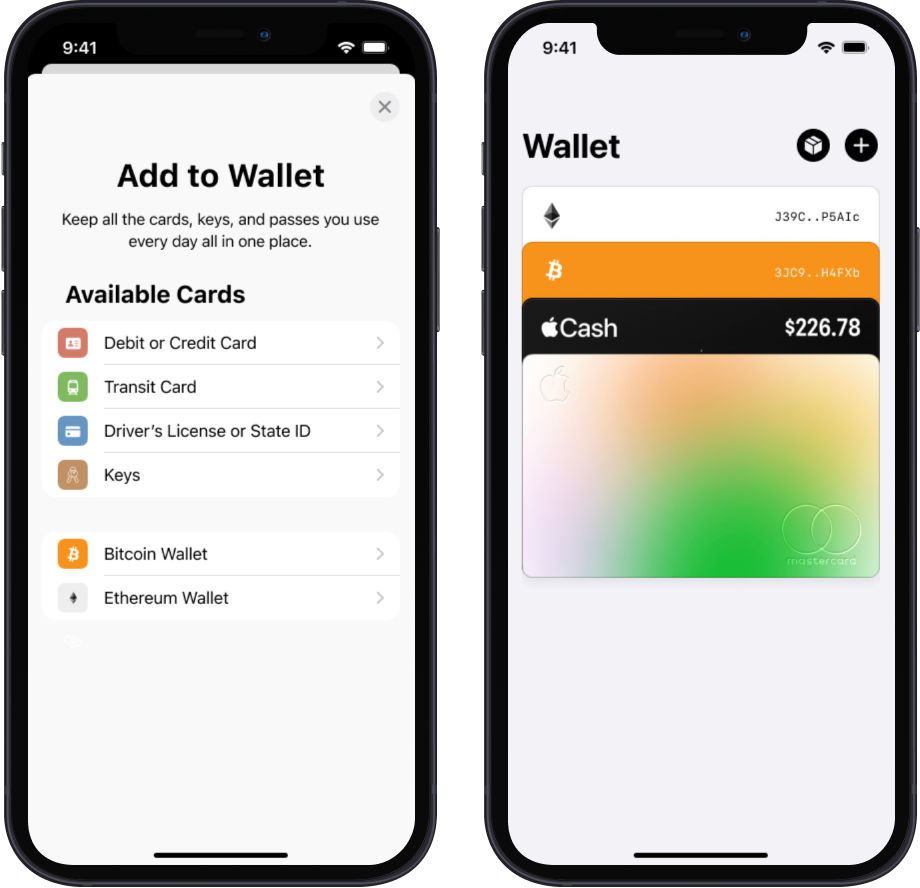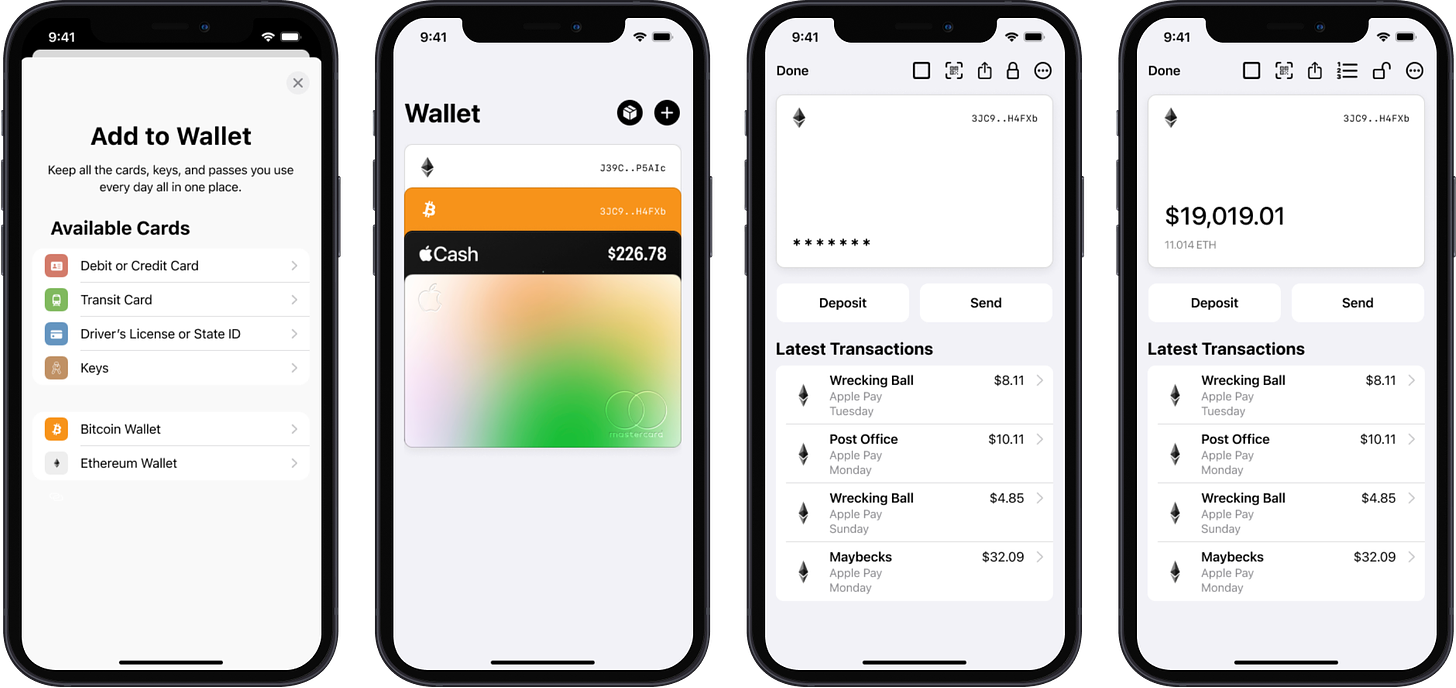#75 Self-Custody and Wallet Integrations in Apple Wallet
Experimenting with iOS wallet integrations, hardware wallet integrations, and self-custody for Apple Wallet and Apple Pay
We did a user case study for a Substack native mobile reader, before the native mobile reader was announced or released, to learn more the different design tradeoffs (and will it into existence). This is the same thing but for self-custody and wallet integrations in Apple Wallet. Whatever we learn from this, we can use to build out the prototype further.
Apple Wallet is the wallet I use most. In May, I wrote about my wallet evolution and my journey upgrading from a George Costanza wallet. Apple Wallet was at the center of the upgrade. While Apple Wallet falls short for some use cases, it has taken over as my most frequently used wallet, replaces the vast majority of the use cases for my traditional physical wallet, and is one of my favorite apps/software experiences that I consistently rely on to date.
Two additions I’m looking for are wallet integrations and self-custody. One way Apple Wallet could integrate the most desired cryptocurrencies into Apple Wallet would be allow integrations with Apple Wallet for other iOS wallets, including hardware wallets offering apps on iOS. This would enable people to use other self-custody wallets with Apple Pay. For example, maybe I could link my Muun Wallet with my Apple Wallet, just as I would add a transitional credit card, and choose to use Muun when making a purchase with Apple Pay.
The other would be to directly self custody assets in the Apple Wallet, Bitcoin in particular. For a Bitcoin wallet, a user could add a wallet, just like they would in other Bitcoin wallets on iOS. They could choose to generate a new wallet or import/add an existing one, with the private and public key stored inside Apple Wallet. This would enable people to receive, store, and send with this wallet while having access to it when spending with Apple Pay.
Wallet Integrations
A definition for a self-custody software wallet could be: An app to store assets and the private keys to those assets in an online environment, without relying on traditional 3rd parties like banks to access, maintain, use, and store those assets. Software wallets are sometimes called hot wallets (always online and connected to the internet).
A definition for a self-custody hardware wallet could be: A hardware device paired with firmware and software that allows people to store assets and the private keys to those assets in an offline environment, without relying on traditional 3rd parties like banks to access, maintain, use, and store those assets.
Many of these wallets, both hardware and software, are open source.
Software wallets don’t include some of the additional friction of hardware wallets, and are better for consistent frictionless transfer of assets, but come with certain tradeoffs for safety and security.
Both hardware and software wallets are useful. Today, someone may use a software only or hot wallet to pay, transfer, exchange, or use their assets frequently. That same person may also use a hardware wallet as well, to store larger amounts of assets and to maintain a larger level of friction, safety, and security.
Hardware wallets come with software wallets too. As an example, using one of the Ledger hardware wallet products means you’ll use the Ledger Live mobile app to set up the hardware wallet, transfer assets to the wallet, exchange assets from that wallet, and so on, while verifying these actions with the extra device (the hardware wallet). The added layers of friction for safety and security make it more difficult for frequent use by requiring hardware authentication to move, transfer, and exchange those assets.
Are there ways to self custody assets using hardware wallets, while making them more user friendly, without exchanging safety and security principles? Wallet developers such as Block and Ledger are building wallet experiences that make it easier to use both hardware and software wallets together more seamlessly. Integrating these wallets into Apple Wallet would allow people to use these wallets when spending with Apple Pay.
Block Wallet integration for Apple Wallet and Apple Pay
Alongside a mobile app, we are including a hardware device that acts as a second layer of protection for larger transactions, which means anything above a specific limit that customers decide for themselves in the wallet. Think of this like the difference between a checking account for everyday spending, where only the mobile phone is needed, and a savings account for larger infrequent transactions that warrant a little more friction in exchange for security and thus require the hardware in addition to the mobile app.
What would it look like to integrate Block’s wallet into Apple Wallet, where we could draw from the checking style account inside blocks wallet stack, ready for use when spending and making purchases with Apple Pay?
So why is this useful? A massive number of merchants around the world accept Apple Pay, and a massive number of people have learned to rely on Apple Pay to make purchases with these merchants. Allowing integrations for other wallets would enable people to spend out of their favorite self-custody wallets, including hardware wallets, inside the Apple Pay network. In addition, it allow Apple Wallet users to leverage existing features in Apple Wallet and Apple Pay, such as hide my email, biometrics, Passkeys, and order tracking while spending and drawing from a their self custody wallet.
Self-Custody in Apple Wallet
The other experiment is direct self-custody inside Apple Wallet. For a Bitcoin wallet, a user could add a wallet, just like they would in other Bitcoin wallets on iOS. They could choose to generate a new wallet or import/add an existing one, with the private and public key stored inside Apple Wallet. Again, this would enable people to receive, store, and send with this wallet while having access to it when spending with Apple Pay, while also leveraging existing features in Apple Wallet such as hide my email, biometrics, Passkeys, order tracking, and others.
Self-Custody Bitcoin Wallet in Apple Wallet
Apple could choose to focus on Bitcoin. There are so many different ways you could build it. Some of the design choices that stick out are how to onboard new and exciting wallets, how to build and design private key storage, and private key recovery. Apple could even build their own hardware wallet designed to integrate with Apple Wallet.
Self-Custody Ethereum Wallet in Apple Wallet
The other self-custody wallet we are experimenting with in Apple Wallet is an Ethereum wallet. In the Ethereum wallet there are many similar choices and tradeoffs like how to onboard new and exciting wallets, how to build and design private key storage, and private key recovery. But there are new layers of complexity in Ethereum Wallets such as using other networks like Polygon inside Ethereum, how to store NFTs, and how to add additional wallets.
Play with the prototype, let me know what you think and we can use the feedback to iterate on the next Apple Wallet prototype.
Lucas







